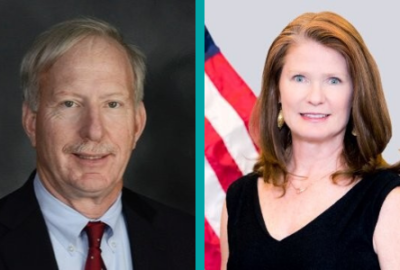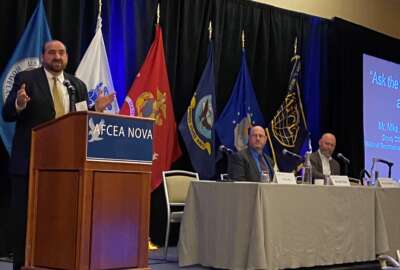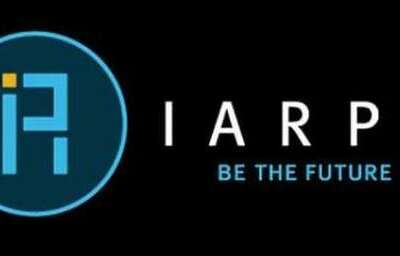
National Geospatial-Intelligence Agency wants more intelligence
A recent broad agency announcement from NGA seeks fresh ways for industrial and academic researchers to help the agency take on hard problems.
Best listening experience is on Chrome, Firefox or Safari. Subscribe to Federal Drive’s daily audio interviews on Apple Podcasts or PodcastOne.
A recent broad agency announcement from the National Geospatial Intelligence Agency seeks fresh ways for industrial and academic researchers to help the agency take on hard problems. It’s celled Boosting Innovative GEOINT Research BAA, or Big R. For what’s going on, the NGA’s research director, Dr. Cynthia Daniell, joined Federal Drive with Tom Temin.
Interview transcript:
Tom Temin: Dr. Daniell, good to have you on.
Dr. Cynthia Daniell: Hi, thank you very much for having us Tom.
Tom Temin: Alright. I guess let’s begin with the big picture. You’ve got this broad agency announcement — Big R — tell us what you’re fundamentally trying to achieve here.
Dr. Cynthia Daniell: So first, let me tell you a little bit about NGA to put it in context. At NGA, it’s the National Geospatial Intelligence Agency — and we are here really to give a story to everything that happens on Earth. Everything that happens has a place and a time, and we’re here to tie it all together and give a story. We’re here to tell you what is happening and where it is happening, and then what could happen and when to give a little bit of the predictive side of it. We are with both DoD and the intelligence community. So it is our responsibility to do exploitation and analysis of all of this imagery and geospatial information that we see on the physical features and the activities that are, as you know, nowadays, they’re all geospatially referenced activities on the Earth. And provide that then to policymakers, warfighters, first responders and tell them, give them a warning and decision space for military commanders to make their own decisions.
Tom Temin: Alright, so not a trivial mission.
Dr. Cynthia Daniell: No, no, not by far. And our Admiral, the director of NGA, Admiral Sharp has given us marching orders. He’s given us orders to go out and change the way we are doing business. It is no longer business as usual at NGA, we are in a state of reimagining, reimagining our work and how we do it and how we provide this information. So toward that end in research, I’m very familiar with the BAA from my time at DARPA, and my experience with the BAA at DARPA is that it really is the best channel to get the most competitive performer base that we can. By performance. I mean the contractors that can do this work, this work for the mission of GEOINT, and to reach the most people have the most ability to be agile and flexible in the way we contract. The BAA really provides the best vehicle for that. So this BAA that we’re putting out will accelerate our research and provide NGA with ability to both expand and diversify its research performer base, while giving us the better flexibility and agility that we need in our research contracting efforts.
Tom Temin: You’ve got numbers, different categories of performers, that are those that provide data on a regular basis because the NGA concentrates on the difficult data. And there’s a lot of commercial data out there that you take in, but you’re talking about performers or people that do research on behalf of NGA. And I guess I’m surprised to understand they do this under contract as opposed to grants or other mechanisms.
Dr. Cynthia Daniell: With this BAA that we have out now, we will have all those mechanisms available to the performers. We will have both far and non far transactions. We will have, as you said, grants available, we will have contracts available. We have a variety of types of contracts. I mentioned a term called FAR which is the Federal Acquisition Regulation.
Tom Temin: We know it well.
Dr. Cynthia Daniell: Okay wasn’t sure if everybody in the audience was familiar with that. So it’s very intimidating. I’ve been on both sides, including my stint at DARPA. I’ve also been for the primary, the most of the part of my career, I’ve been out in the private sector working as a contractor, a performer so to speak, for various agencies and providing them with the work that they so greatly need. And so I’m very familiar that it can be very intimidating. So I was just going to follow up on your point about the instruments. In this BAA we will have some FAR instruments that many people are familiar with, but as well for the new people we’re trying to reach that are not familiar with that, we will have non FAR instruments. And so those could be other transactions and other instruments that will be available to them.
Tom Temin: And what is it you’re looking for that you’re not getting now. You said the NGA wants to change the way it does business — and so what is the research all about that you’re trying to get out here?
Dr. Cynthia Daniell: The Admiral wants to change the way we’re doing business in terms of speeding up the way we do business. And so part of that comes to this contracting, and we are getting a lot of good research, but we are not reaching as many performers that we would like. So that gets to the science portfolio that we have here in research. And our work we’re looking at will span from one to five years. So by research, we don’t mean the long term, 10 year to 20 year type of research, at the most will be five year time research. But we also do things on the short term horizon for research, which would be one year. And so these are things that we can turn around quickly and get into the analysis workflow. That helps us put our products out, and as you said, a lot of it is just providing data, but somebody has to make products out of all of that data, which is what our analysts do. So the research areas, we in research have a portfolio that matches the products that we produce and that portfolio spans three different areas. The first one is foundational GEOINT. And the second is advanced phenomenologies. And the third is analytic technologies. And I can dive a little deeper in each of those if you’re interested.
Tom Temin: And yeah, just briefly tell us about these three areas of endeavor and how the research might come into there.
Dr. Cynthia Daniell: Yeah, so we divide our portfolio up in those three areas here inside of research. And as you noted, as the director of research, I’m responsible for a pretty wide variety of sciences but we try to align them in these technical application areas that we’re responsible for. And one of those is foundational GEOINT. And that is accurate, high resolution continually updated representations of the Earth’s properties available on demand. So that can cover gravitational models, magnetic models, as well as just foundational properties in the terrain space itself. So that’s one area and that’s a large part of that is PNT — position, navigation and timing. That’s one of the areas that we are responsible for supporting the DoD on, and that falls into the foundational GEOINT. The second area is what we call advanced phenomenologies. And that has a lot to do with sensors and collection and tasking that we’re responsible for. The accurate definition is that we use novel methods and efficient strategies to deliver spatially, spectrally can resolve data, all from a growing plethora of sources out there both traditional and non traditional. As you know, there are many overhead sources out there, both NTM and commercial that we utilize, as well as UIDs and many, many sensors — the number of sensors is growing.
Tom Temin: Yes, people are launching fleets of small satellites almost every year and see.
Dr. Cynthia Daniell: Yeah, now I understand you can have them fly over and record your birthday party.
Tom Temin: Great, just what we need. And then the third area is analytic technologies. Tell us about those.
Dr. Cynthia Daniell: In analytic technologies. We take that data from these traditional end onto this sources. And we leverage those along with new data sources, as you know many social media sources, etc. — and use analytic techniques to add the geospatial intelligence to multi intelligence analytics to address these emerging threats from our adversaries. So that’s a very wide area, I would say our portfolio was split, the third area takes almost half of our money, where as the first two areas take the other half, because the analytics is such a large and growing area and so necessary to making decisions.
Tom Temin: And the BAA mentions tackling the difficulty of spatial intelligence problems. What are fundamentally the big problems or the grand challenges that you have in GEOINT?
Dr. Cynthia Daniell: There are so many. And as you know, our customers are the policymakers, the warfighters, and first responders. So each one of those customers requires a different set of technologies, but really reducing the timeline for everyone, reducing the timeline for the warfighter, from getting the information to making the decision. So coming from data space to decision space, and shortening that timeline. So to shorten that timeline, and for policy makers as well, to shorten the timeline in their decision space. And in first responders, it’s really just to help them more accurately apply their mitigation to the situation at hand, whatever mitigation strategy they are performing at that moment. But to shorten that timeline really comes to automation. I will say the agency is all in on automation. And we realize it’s a large challenge. And it is the biggest challenge we have. And it’s going to be a long road that we have to tackle this. But bringing that into the workflow of the analysts, the analysts have to see the data and they’re now beleaguered with so much data to really triage through that and what data is important to them to be able to give them the signal. Don’t look here, but do look here. And it may be 1 out of 100 scenes are the ones that have that primary piece of information. So automating that and taking the load off of these analysts so they can concentrate on them in the important maneuvers of the moment is really a big job. I would encase it all in automation, so being able to automate not only just the critical pieces that we need to be looking at, but once we find that critical piece of information, then putting in the context of all the multiple pieces of intelligence all that we have coming in all the time automating that.
Tom Temin: And finally, the BAA references the NGA’s tech strategy. You talked about how it has to do with the directors intent, but there’s also the NGA tech strategy. And just briefly, what is that? And how does the BAA help it out, or how does it help out the BAA?
Dr. Cynthia Daniell: Yeah, we’re very happy with the directors technology strategy, the first time that NGA has come out with the pieces like that — so it’s good to introduce the public into what we’re doing. And we are integrated well in the tech strategy, which the tech strategy is really saying that software and data are our strategic assets, and that we are a software and data enterprise and that we are here at NGA to empower the builders and makers of geospatial technology through those assets. And you can’t have any of those assets without the expertise behind them, which is what research is providing and what the BA will provide. And I will say that’s the tie. So the BAA itself is going to have instruments that will allow us to get to so many different performers. I know we talked about it earlier, but just to emphasize, we’re looking at academia, we’re going to broaden our competitive performer base to small businesses, startups, including these even very small businesses of startups, large industry and nonprofits. And we want to capitalize on the strengths of all of those and bring them together. Having that entire potpourri of performers will give us the best of all of them.
Tom Temin: And just give us your quick bio and how you came to this particular position.
Dr. Cynthia Daniell: Ah oh yes. You know, life, you’re just in the right place at the right time. I did spend a lot of time out in private industry. I bookended my experience at DARPA with a stint at HRL, the Hughes Research Laboratories, and then SRI, Stanford Research Institute, both believe it or not in California. And between those I spent six years at DARPA as a program manager in DSO, and then I was just in the right place at the right time — then I saw the ad for NGA and I was out at SRI at that time but I performed national security service at DARPA, and it’s such a draw to be in the throes of driving the bus for national security and it’s such a rush to come to NGA every day, really it’s just a pleasure to be here and be able to perform on a more operational basis, it’s more of a operational research that we do here. The BAA is the introduction to everything that we do, but everybody should know that there are topics coming on the BAA. And that’s important to note because those are the instruments with the money. And that’s what people will want to propose to. Our first topic dropped yesterday — and that is about COVID rapid response. The next topic should be dropping in the next couple of weeks about radar, optimizing the collection of radar. And then we have a third topic, which will be coming on September, which is open to many of the areas I just talked about here. And that’s most interesting to everybody because it’s open to all of our subject areas. And throughout the year, we’ll be putting more what I’m calling chapters to this whole portfolio we’re building out there, and those are the topics and those will have the money and people should know that.
Tom Temin: Alright, we’ll make sure they know. Dr. Cynthia Daniel is research director at the National Geospatial Intelligence Agency. Thanks so much for joining me.
Dr. Cynthia Daniell: Thank you. We appreciate the time.
Check out the Broad Agency Announcement here.
Copyright © 2025 Federal News Network. All rights reserved. This website is not intended for users located within the European Economic Area.
Tom Temin is host of the Federal Drive and has been providing insight on federal technology and management issues for more than 30 years.
Follow @tteminWFED
Related Stories





